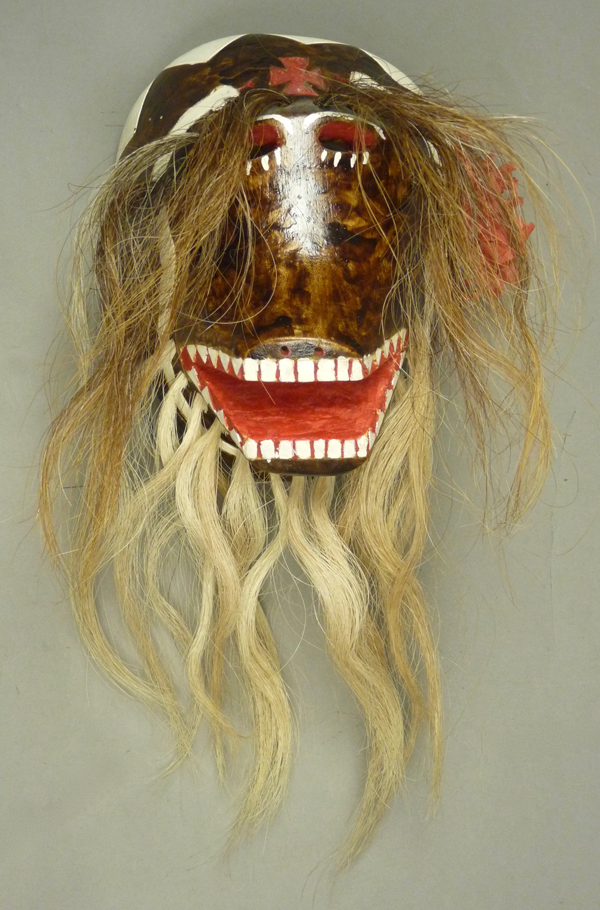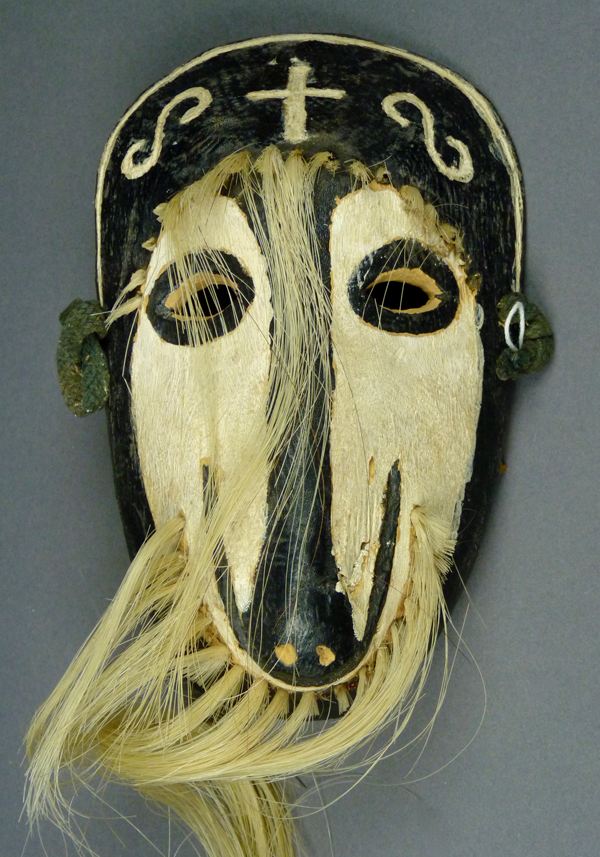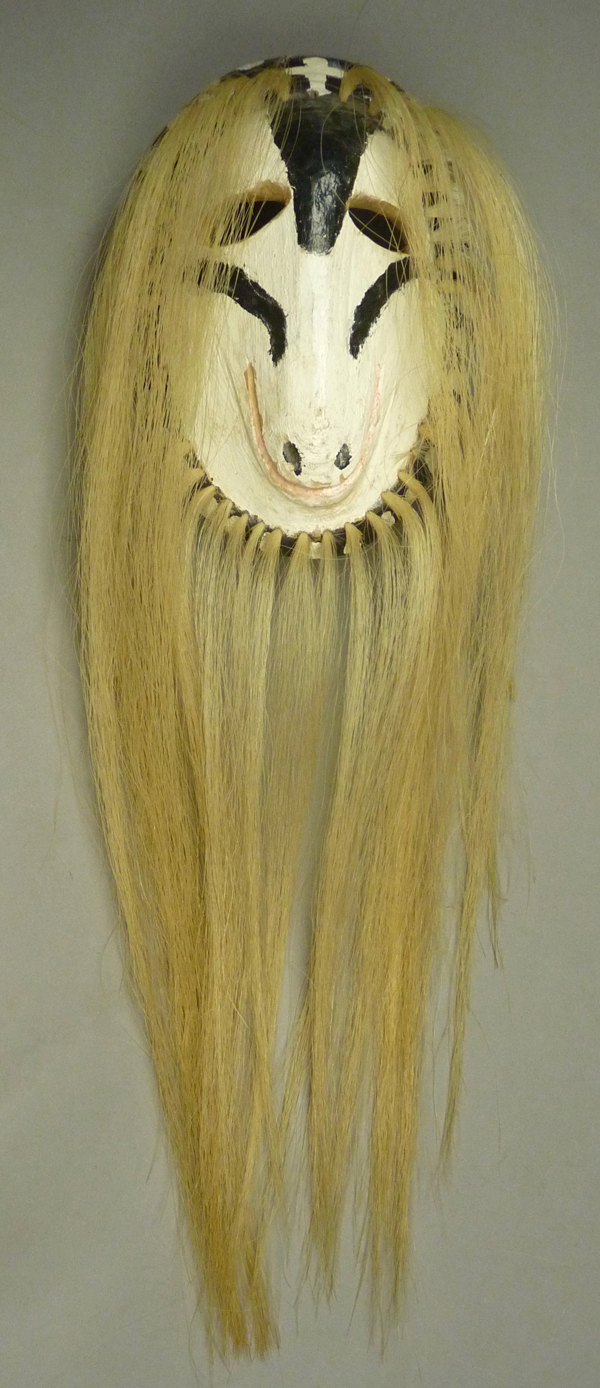In 1994 I purchased a trio of Sinaloa Pascola masks from my friend Tom Kolaz. They had been collected together, but none had an identified carver. Two had the faces of goats, and the third, with a feline face, was said to represent a Leon (Mountain Lion). Looking at them now, I believe that the Lion and one of the Goats were carved by Guadalupe Vadon Ochoa, this week’s featured carver, while the third was the work of another highly familiar hand, that of Pablo Pacheco. I was very pleased to obtain these three then anonymous masks, not only because masks from Sinaloa are not commonly available on the market, but also because the Mountain Lion is an unusual subject for a Pascola mask, and the goat by Guadalupe is particularly charming. The Mountain Lion does explicitly appear in Yaqui Deer songs and is then portrayed in dance performance by Yaqui Pascola dancers. I assume that mountain lions also appear in Mayo Pascola dancing, although I have not found a specific reference for this in the Mayo dance literature. In the Unites States we call the Mountain Lion by various additional names—such as Cougar, Panther, Puma, and Catamount.
Here is the Mountain Lion Pascola mask.
The ears on this mask are very similar in style to the horns on an identified mask that appears later in this post.




